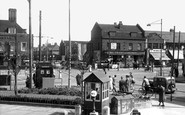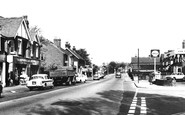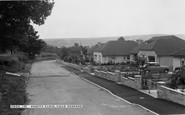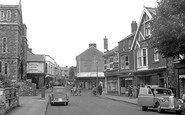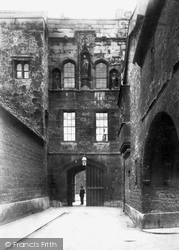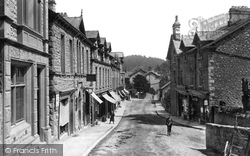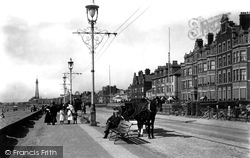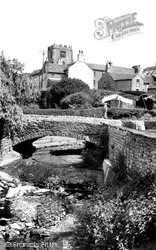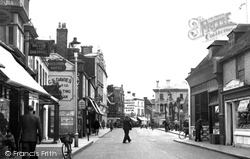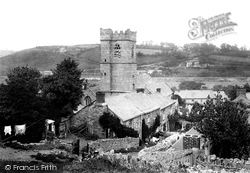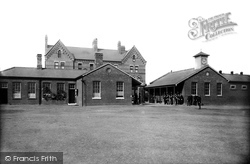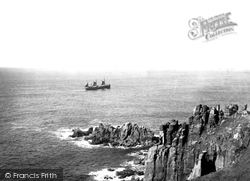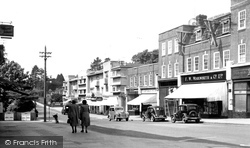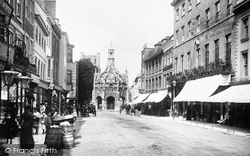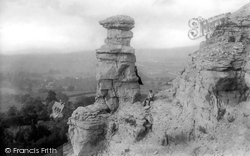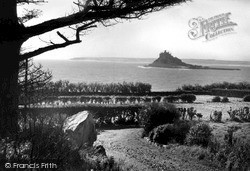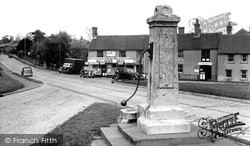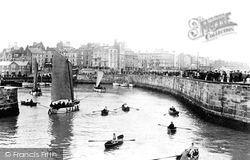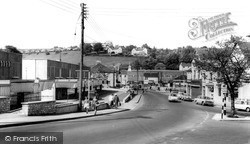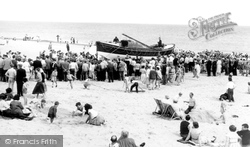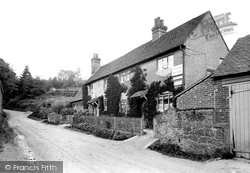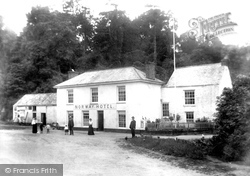Merry Christmas & Happy New Year!
Christmas Deliveries: If you placed an order on or before midday on Friday 19th December for Christmas delivery it was despatched before the Royal Mail or Parcel Force deadline and therefore should be received in time for Christmas. Orders placed after midday on Friday 19th December will be delivered in the New Year.
Please Note: Our offices and factory are now closed until Monday 5th January when we will be pleased to deal with any queries that have arisen during the holiday period.
During the holiday our Gift Cards may still be ordered for any last minute orders and will be sent automatically by email direct to your recipient - see here: Gift Cards
Places
4 places found.
Those places high-lighted have photos. All locations may have maps, books and memories.
Photos
6 photos found. Showing results 261 to 6.
Maps
65 maps found.
Books
1 books found. Showing results 313 to 1.
Memories
4,591 memories found. Showing results 131 to 140.
39londonroad
I was born in Hackbridge in 1944. I lived there until 1953 when my grandparents, aunts, uncles, and cousins put me on a plane on May 2 to join my father who had emigrated to Canada the year before. My mother, who had lived in ...Read more
A memory of Hackbridge in 1944 by
The Shore Of Wood And Glass
Eynort shore is not the prettyist in the west, but it's washed up some odd things from time to time, Both myself and my brother have found messages in a bottle, and a least half a dozen bombs or old test missiles which ...Read more
A memory of Eynort
The Two Bob Gun
At the top of Queens Road in Buckhurst Hill is a small newsagents shop. It was owned by the Mr & Mrs. Silk. The shop sold papers magazines cigarettes, sweets and a few toys. Situated right across the road from where ...Read more
A memory of Buckhurst Hill by
End Of An Era
In 1944 I was a 13 year old pupil at Morley Grammar School. One beautifully sunny Sunday evening I walked from my house at 16 Albion Street (now Morrison's carpark) and about 40 yards East of the Pentecostal Church of the Nazarene ...Read more
A memory of Morley in 1944 by
War Days In Chingford 1939 46
up to the age of seven from 1939- 46 i lived in middleton close i to remeber the war years , walking across sopers farm to feed the pigs on acorns , catching newts in the little pond , which is now ...Read more
A memory of South Harefield by
Busk Crescent
Late in 1945 my parents moved to 25 Busk Crescent, in Cove. The house was on top of a hill and overlooked the Farnborough airfield. From the front bedroom you could see aircraft landing on the runway. The house was one of a string of ...Read more
A memory of Cove in 1945 by
Ice Cream Cart
Can anyone remember the horse-drawn ice-cream cart, the guy had as I remember a green cart, a white coat and a whistle. His ice-cream was really good proper stuff, then soft ice-cream came along and that was it, he must have just ...Read more
A memory of Crook by
Before The Houses Came
I remember these fields before any building was done in this part of the village. The fields were owned by Mr Fred Bradley and Mr Harry Watts. I can remember going with Mr Watts to see if any cows had calved in the ...Read more
A memory of Child Okeford in 1940 by
Childhood Memories
I moved to Spencer Avenue, Hayes, when I was 5 and the war had just finished. My earliest recollections were of starting school at Yeading Lane and walking there through thick snow. Luckily we had school dinners so ...Read more
A memory of Hayes in 1947 by
Childhood Memories In The Mumbles
I was born in London, but my Mother came from the Mumbles, so several times a year we took the train from Paddington on our journey to Swansea. With a large family of grandparents, aunts, uncles and cousins, ...Read more
A memory of Mumbles, The by
Captions
925 captions found. Showing results 313 to 336.
Various benefactors, including John Forest, Dean of Wells, came to the rescue, and work on the college was eventually finished.
No longer reliant on a hazardous route across the sands, the town quickly grew, catering for the well-to-do, who came here to live or take their holidays.
Then, as today, horse-drawn carriage rides were popular, as were the electric trams, which were the first operating anywhere in the country and came into service along the promenade in 1885.
Without automatic machines, it was an all-day job; washing, rinsing, blueing and mangling, and then pegging out before the rain came.
It is claimed that the Magna Carta was written on Havant parchment, and the parchment used for the 1919 Treaty of Versailles came from here.
It is interesting to note that the tide came up to this point when the church was built.
It is a town full of history - the founder of Yale University in the US (Elihu Yale), came from the Wrexham area, and is buried at St Giles's church.
Its very Dutch-looking curved and pedimented gables came when the house was rebuilt after fire destroyed the upper storey in 1674.
It came into being 200 years ago when granite was being quarried. The land was given by the Prince of Wales, and from him it gained its name.
These barracks were built about three years after the Infantry Barracks, but the construction came under much criticism.
Victorian travellers and writers, such as Dickens and Tennyson, all came to England's most westerly point and admired its rugged grandeur.
Most of the national retailers (Woolworth`s, Boots and Sainsbury`s) came to Haywards Heath in the 1930s.The electrification of the railway certainly helped.
In 1906 it was recorded that thousands came from Burnley and Padiham besides Clitheroe. Eli Tucker and his sons David and Charles of Brungerley Farm supplied boats.
Built early in the 16th century by Bishop Storey, the purpose of the cross was to provide shelter for traders who came into the city to sell their wares.
Much of the stone for the spa town came from this area, and the Devil's Chimney is probably a result of quarrying as well as erosion.
The presence of the mount contributed to the growth of nearby Marazion, which flourished in its shadow and catered for the many pilgrims who came to the Benedictine priory which was built on the summit
The Green c1955 We are looking across Newick's green from the pump towards the Bull Inn, famed at one time for the annual sports- man's suppers staged by Thomas Baden- Powell, cousin of the founder
Cobles came in all lengths from 10ft to 40ft, and usually carried a single large lug sail, but the rig could, and did, vary.
At the bottom of Wells Hill we can see the railway station, which came with the Bath and Bristol line in 1874, succeeding a canal and tramway for carrying coal.
With its new-found status came the trappings: pump room, assembly rooms, even London retailers - who opened for the season, took the money and ran.
This is the 'Jose Neville', the first motor lifeboat to be used at Caister: she came into service in 1941.
This was the start of the famous Felsted School, which rose to the height of its fame in the 19th century under its headmaster W S Grignon.
After the railway came to the nearby town of Dorking, and also Gomshall, in the 19th century, Holmbury became a desirable place to live.
This well-known house takes its name from the Scandinavian ships that came up to Perran Wharf to discharge timber for the tin and copper mines many years ago.
Places (4)
Photos (6)
Memories (4591)
Books (1)
Maps (65)

